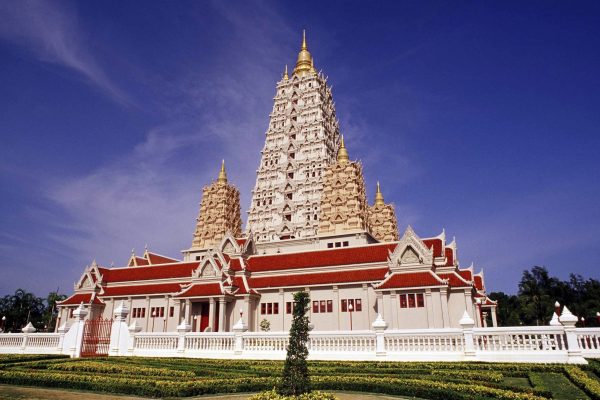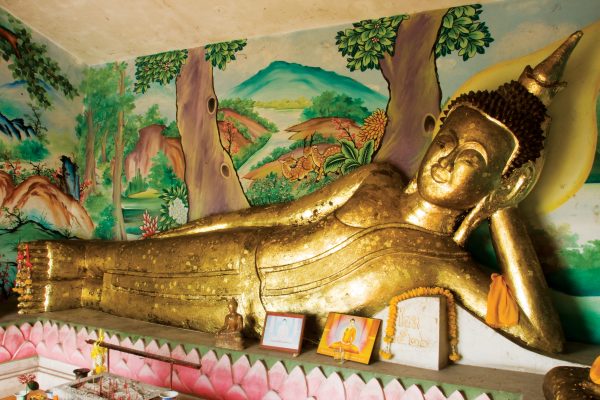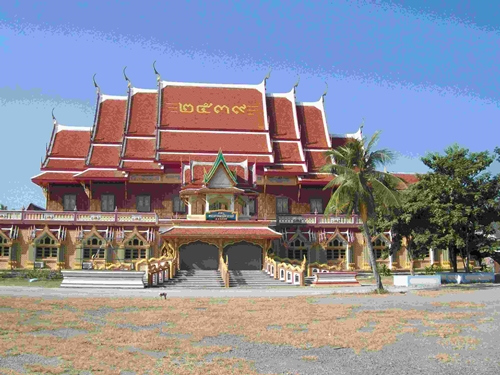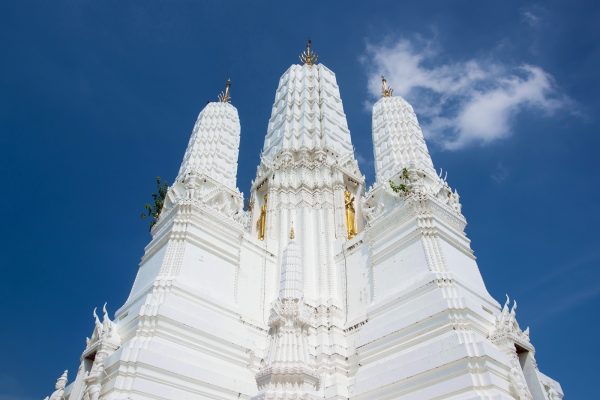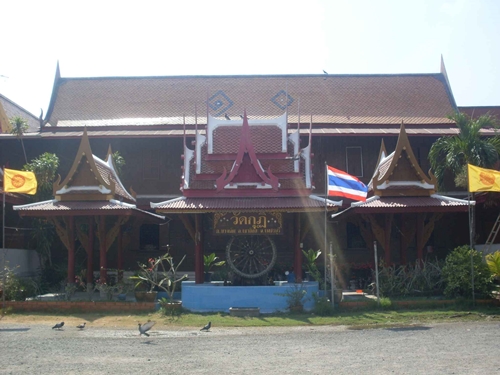
Wat Kuti
Located in Bang Khem Sub District, Khao Yoi District, Petchaburi Province, Wat Kuti is a teak temple of which the exterior of the ubosot has scenes from the Buddhist Jakata stories carved on all sides. This is believed to be a tradition of the northeastern region where murals are painted on the outside wall of an ubosot or ‘Sim’, as called in the northeastern dialect. The teak ubosot at Wat Kuti is an old building which was built by Phra Kru Kasem Sutakhun (Luang Por Chum) in 1930. The entire outside wall (about 20 panels) was carved into the scenes from the stories of the Lord Buddha’s former lives; that is, thirteen chapters of the last great incarnation, some of the ten incarnation which are Phra Chanta Kumara, Phra Phrommanat, Phra Temi the Mute, Phra Phurithat, Phra Nemirat and Suvarnasarm, and some scene from the ‘Journey to the West’. The front gable of the ubosot is carved into the badge with the royal crown from the reign of King Rama IV, while the back gable is carved into the badge from the reign of King Rama V. It is assumed that the ubosot was decorated on the outer wall because the dimension of the architecture is small. This, like most ubosots or Sim E-sarn in the Northeast, is due probably to its location in small communities and its function, serving only for the use of the limited number of monks and novices as prescribed in the Vinaya Pitaka (the Buddhist rules of conduct for ordained monks). The small building, however, is not an ideal place for Buddhists to learn about stories of Buddhism which is the genuine purpose of murals in all temples. Accordingly, northeastern artists often carried out their didactic artworks on the exterior of the ubosot. In the old days, Petchaburi served as an important fortress of Ayutthaya where people from the Northeast were migrated to settle down till the Rattanakosin era. The practice of outer-wall decoration was therefore applied here. In short, the teak ubosot at Wat Kuti in Khao Yoi District is a remarkably beautiful architectural work where elements of art and culture of the central and northeastern regions are combined. The temple is now listed an important site of ancient remains in Thailand.

